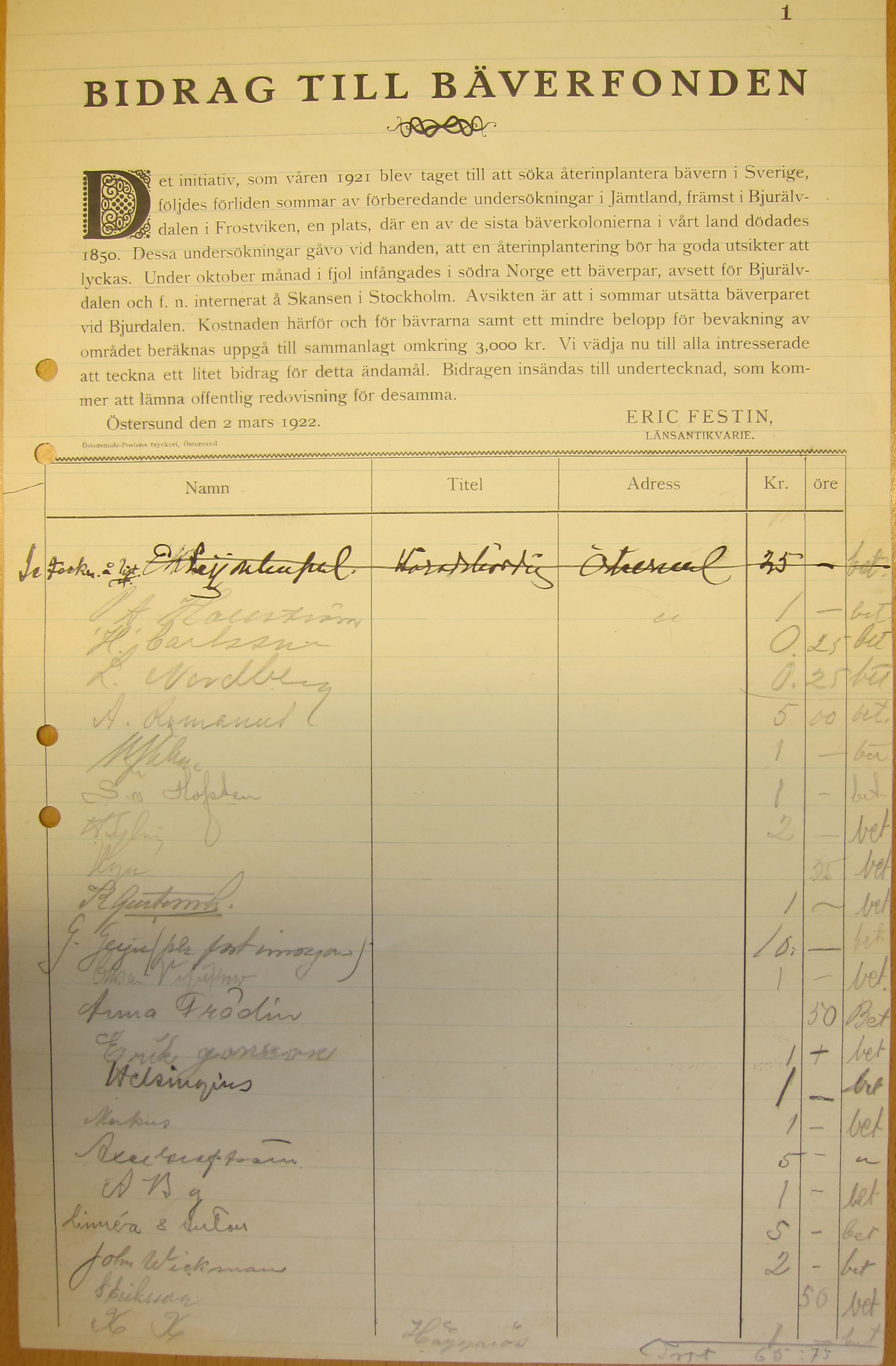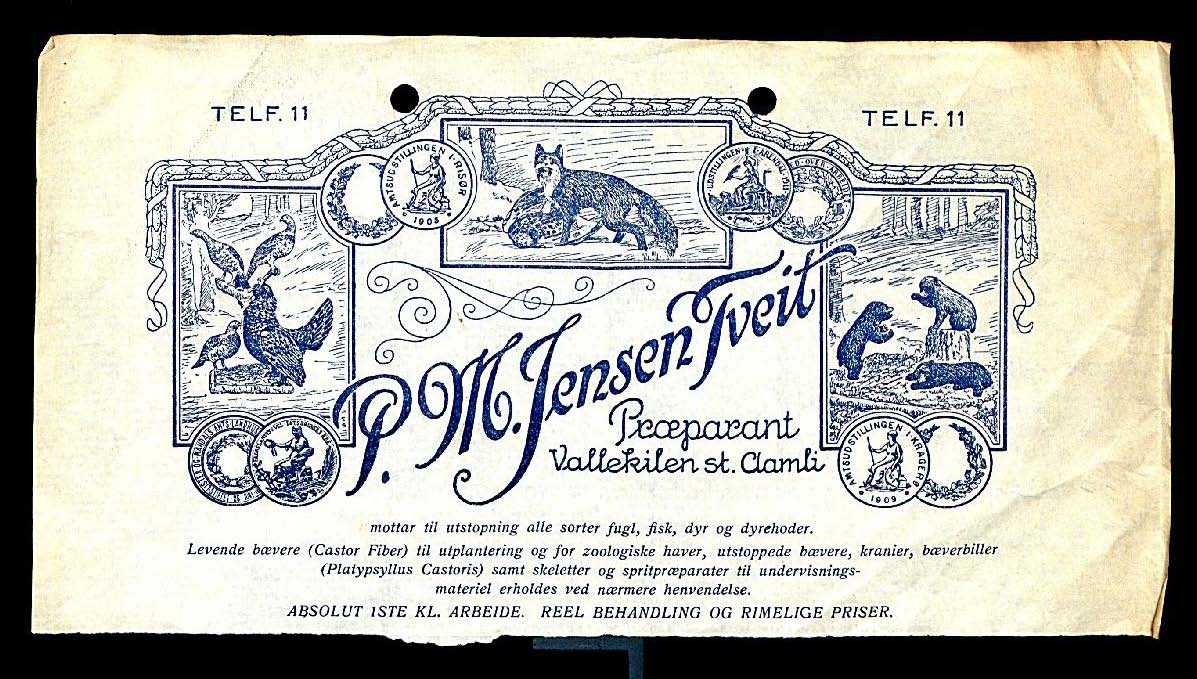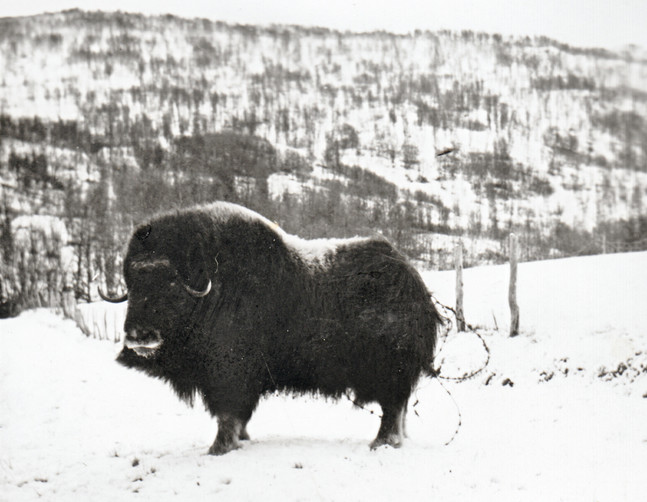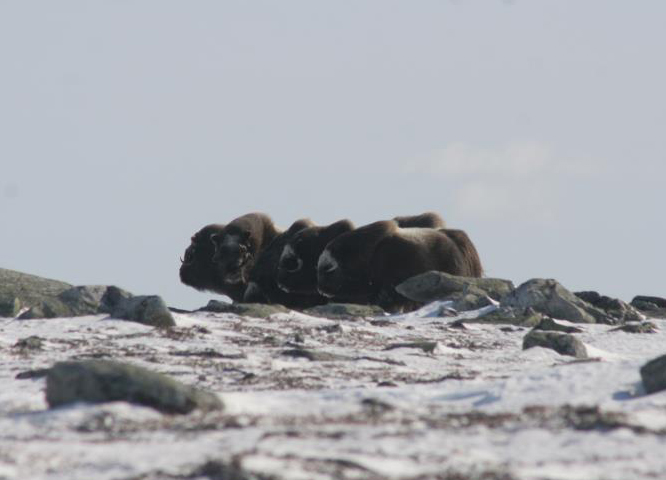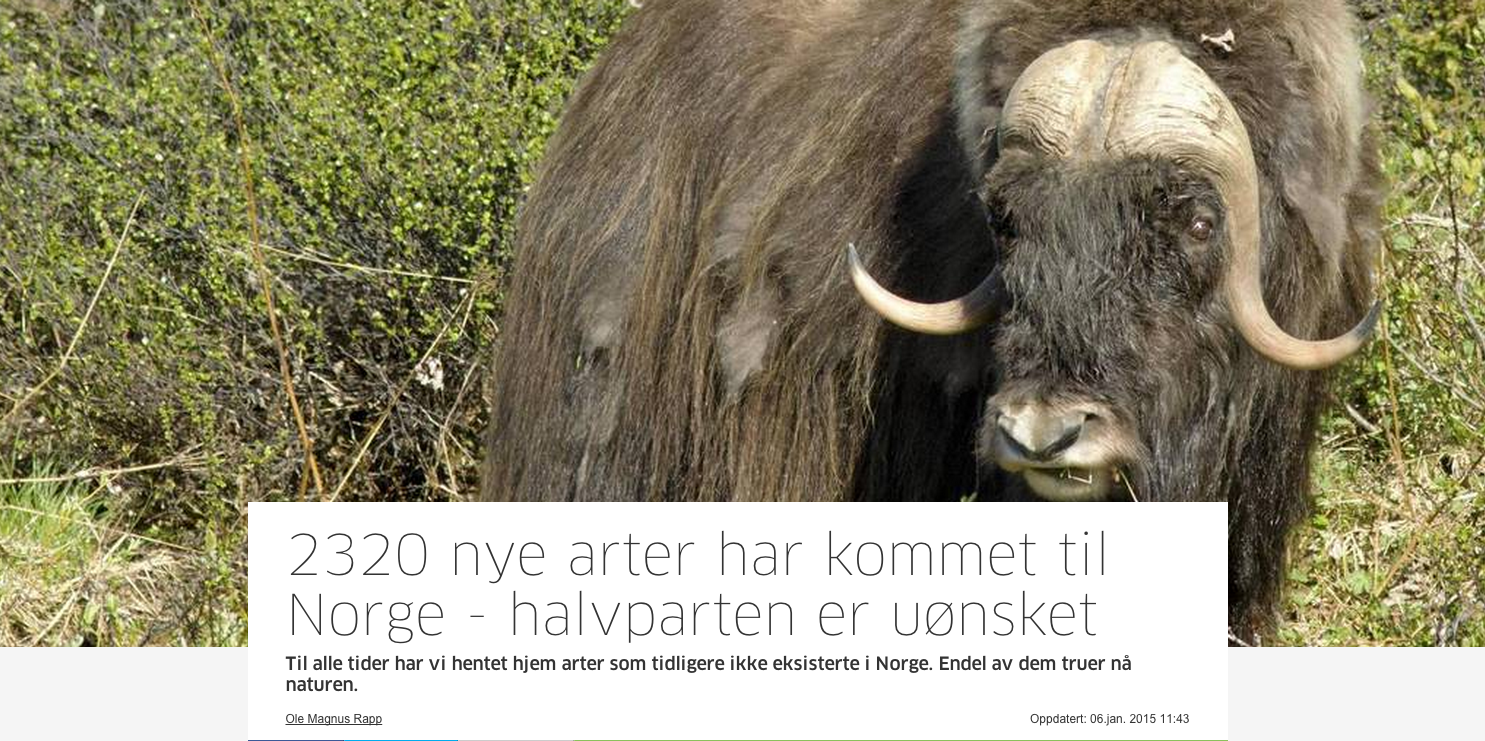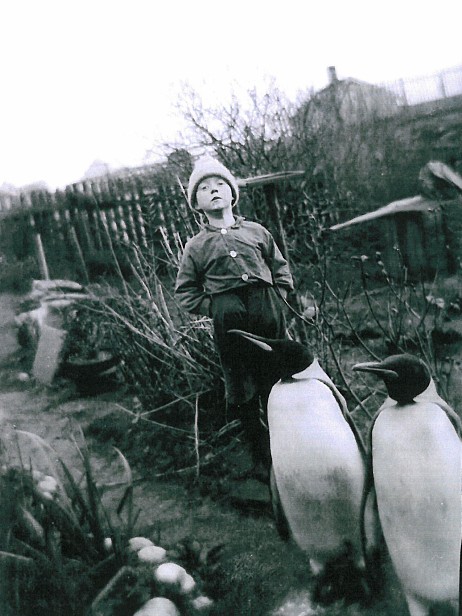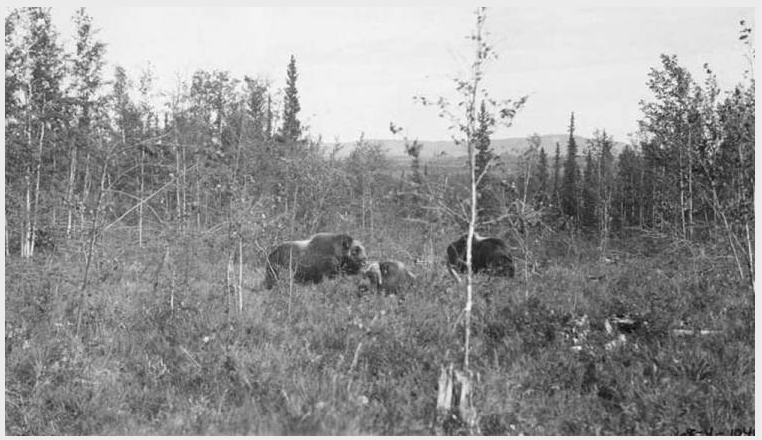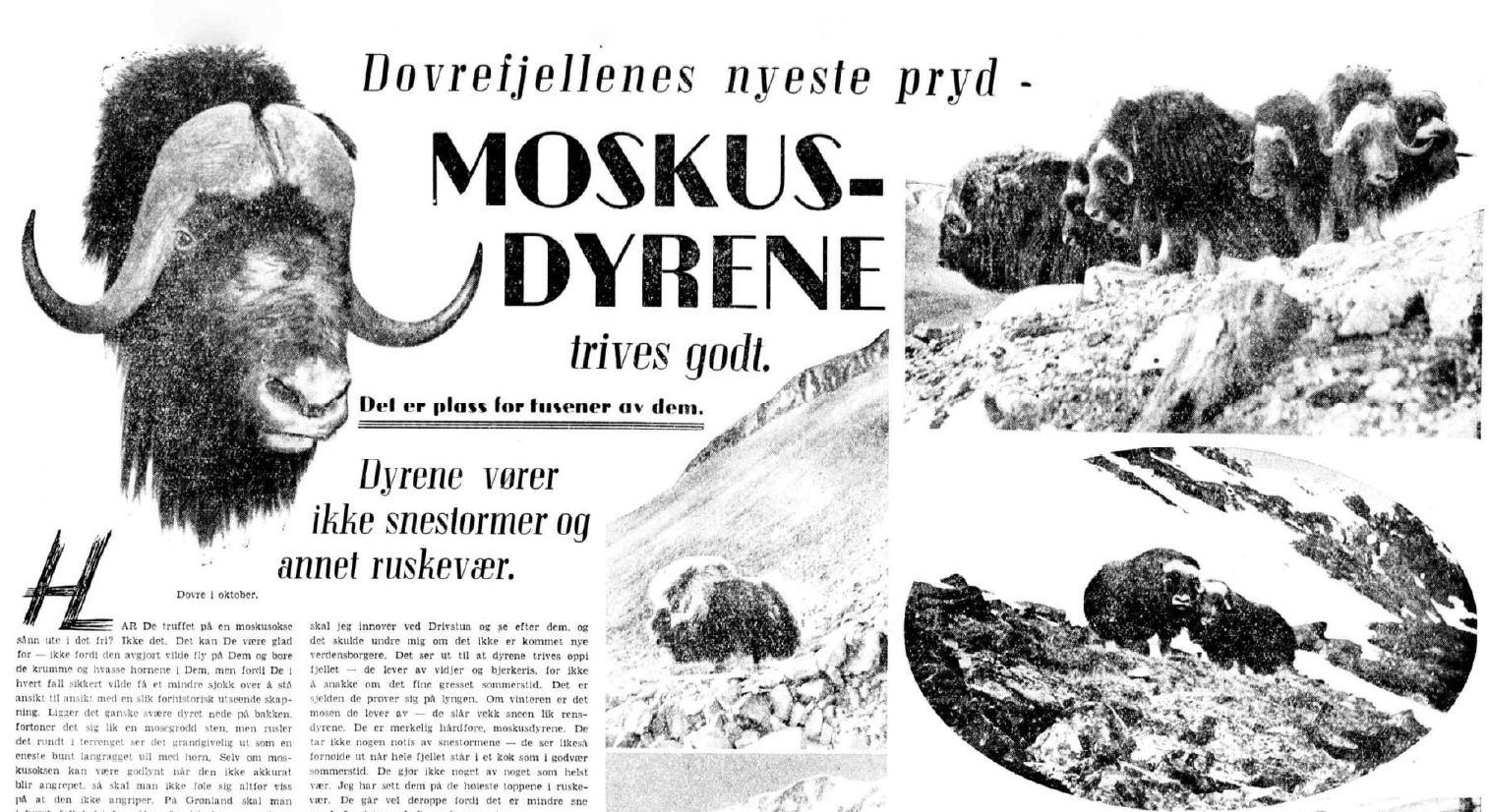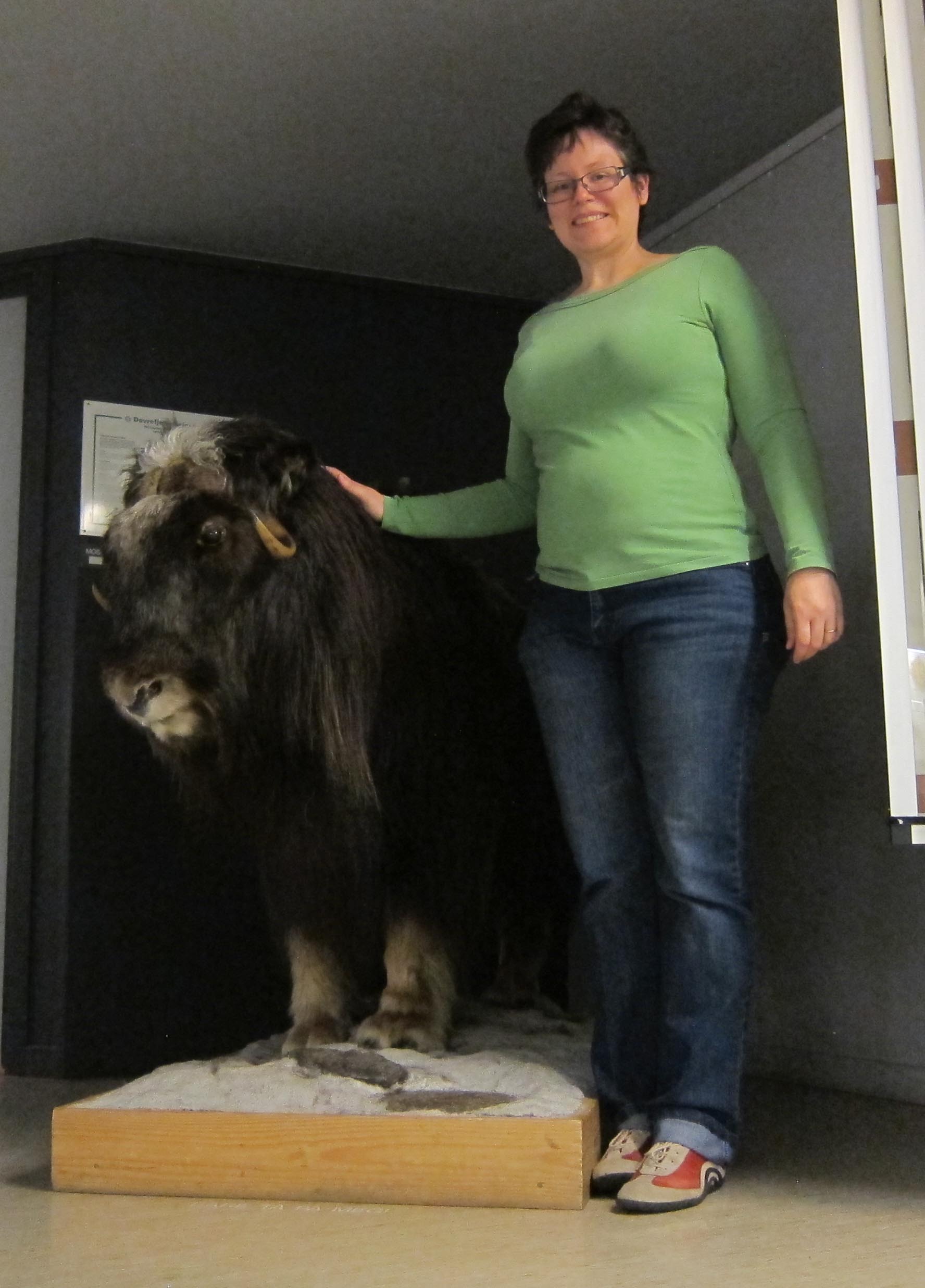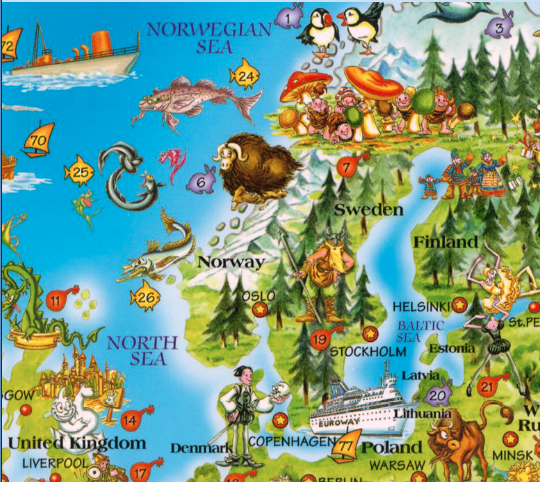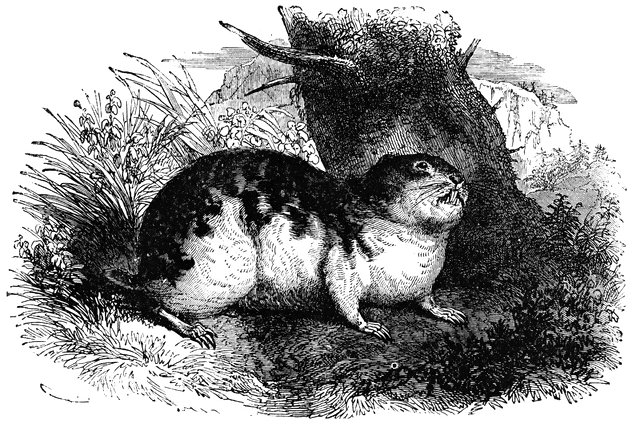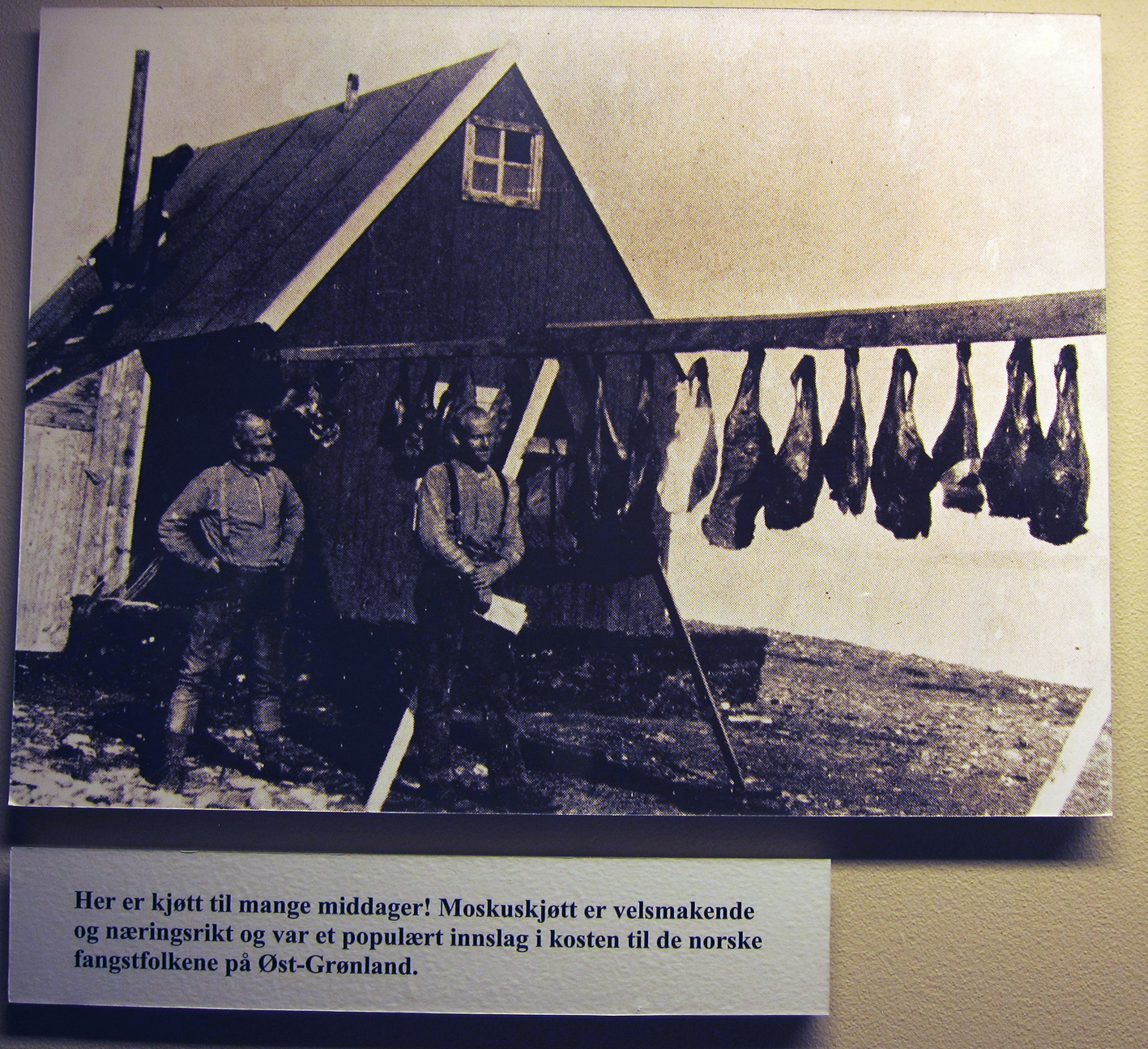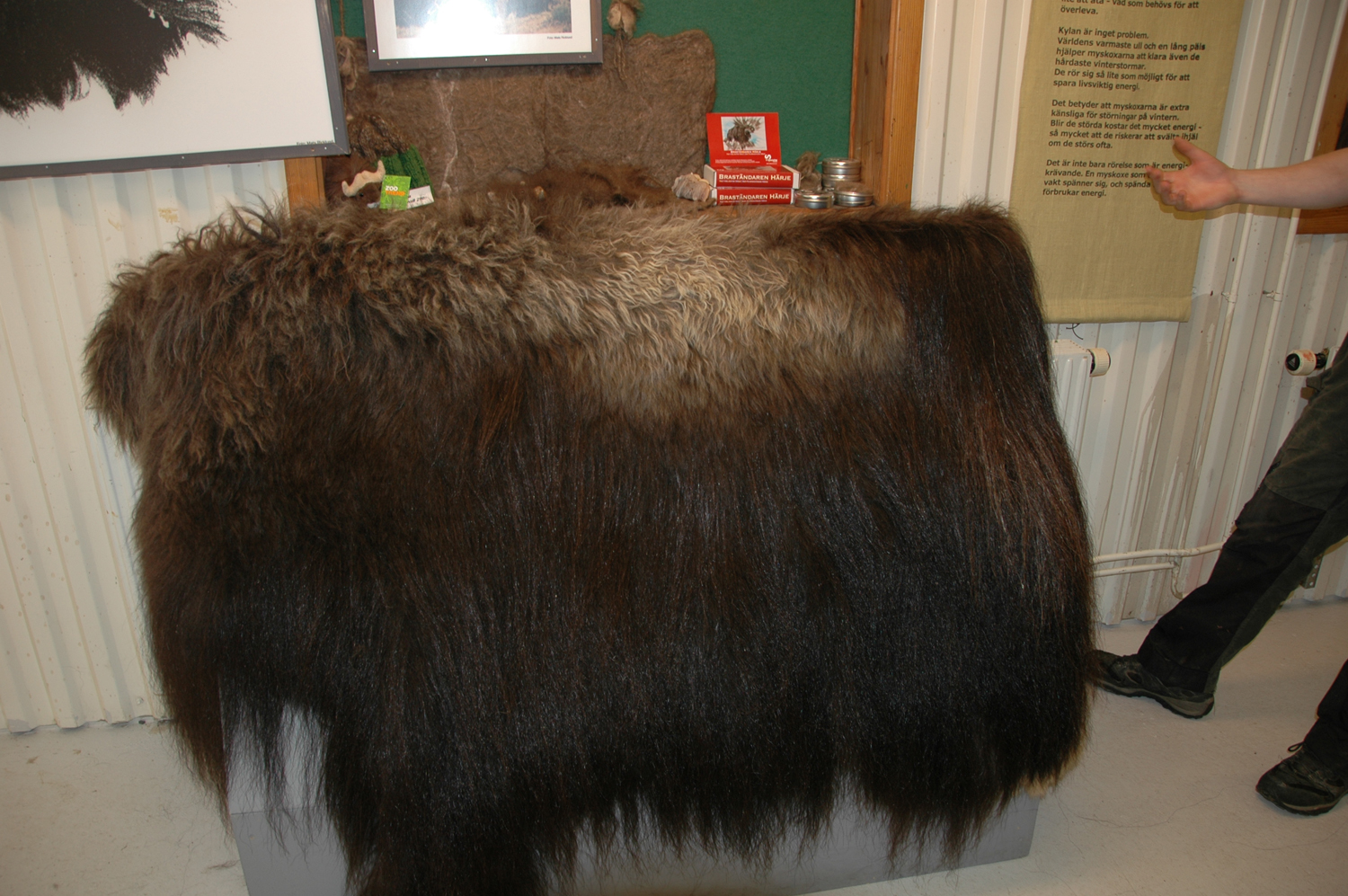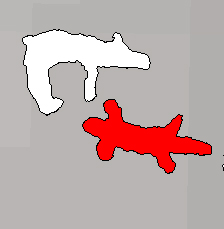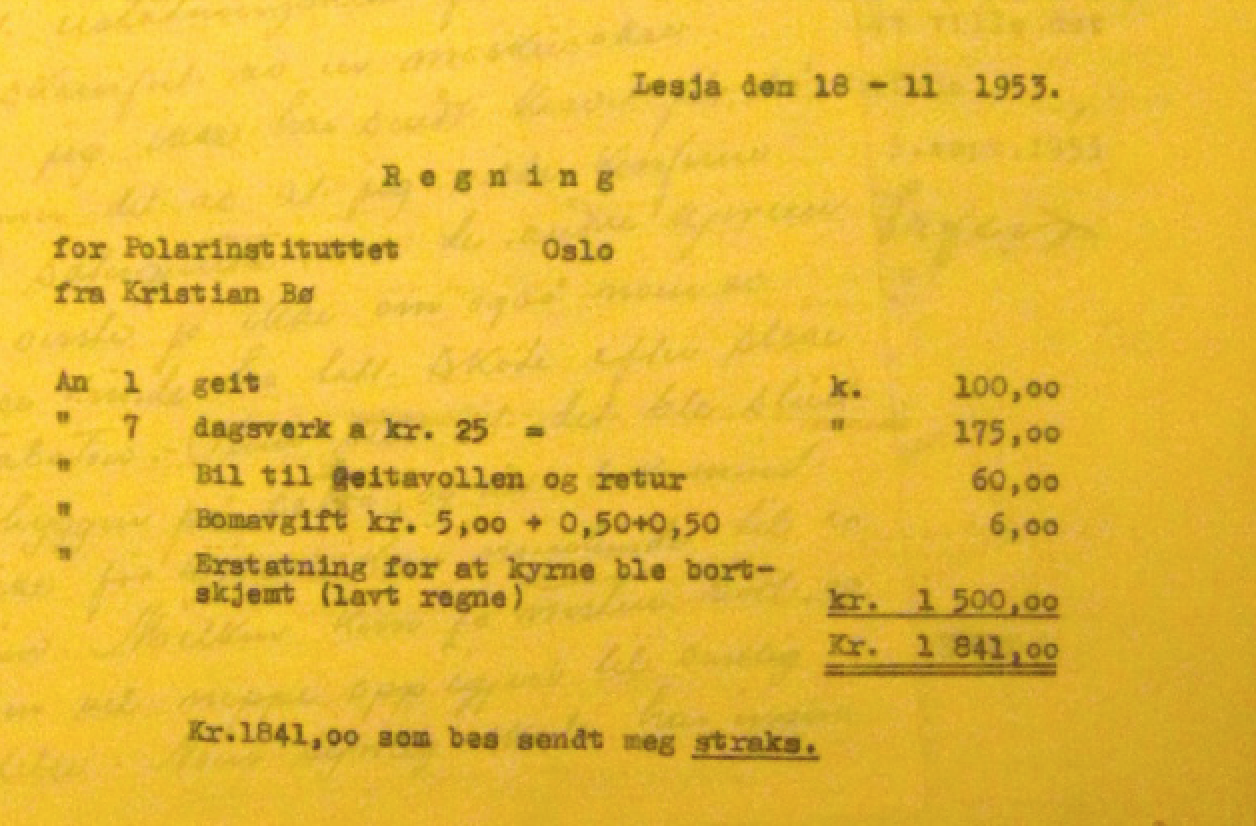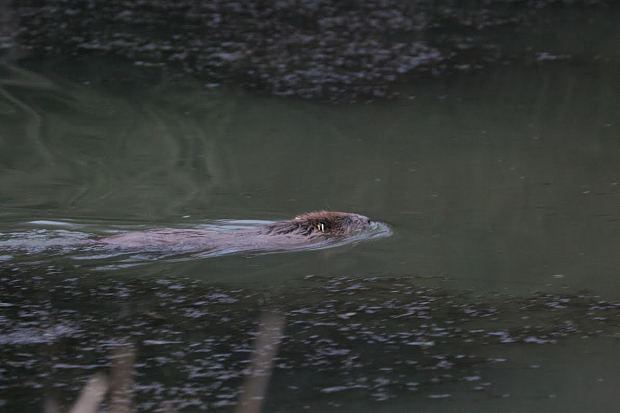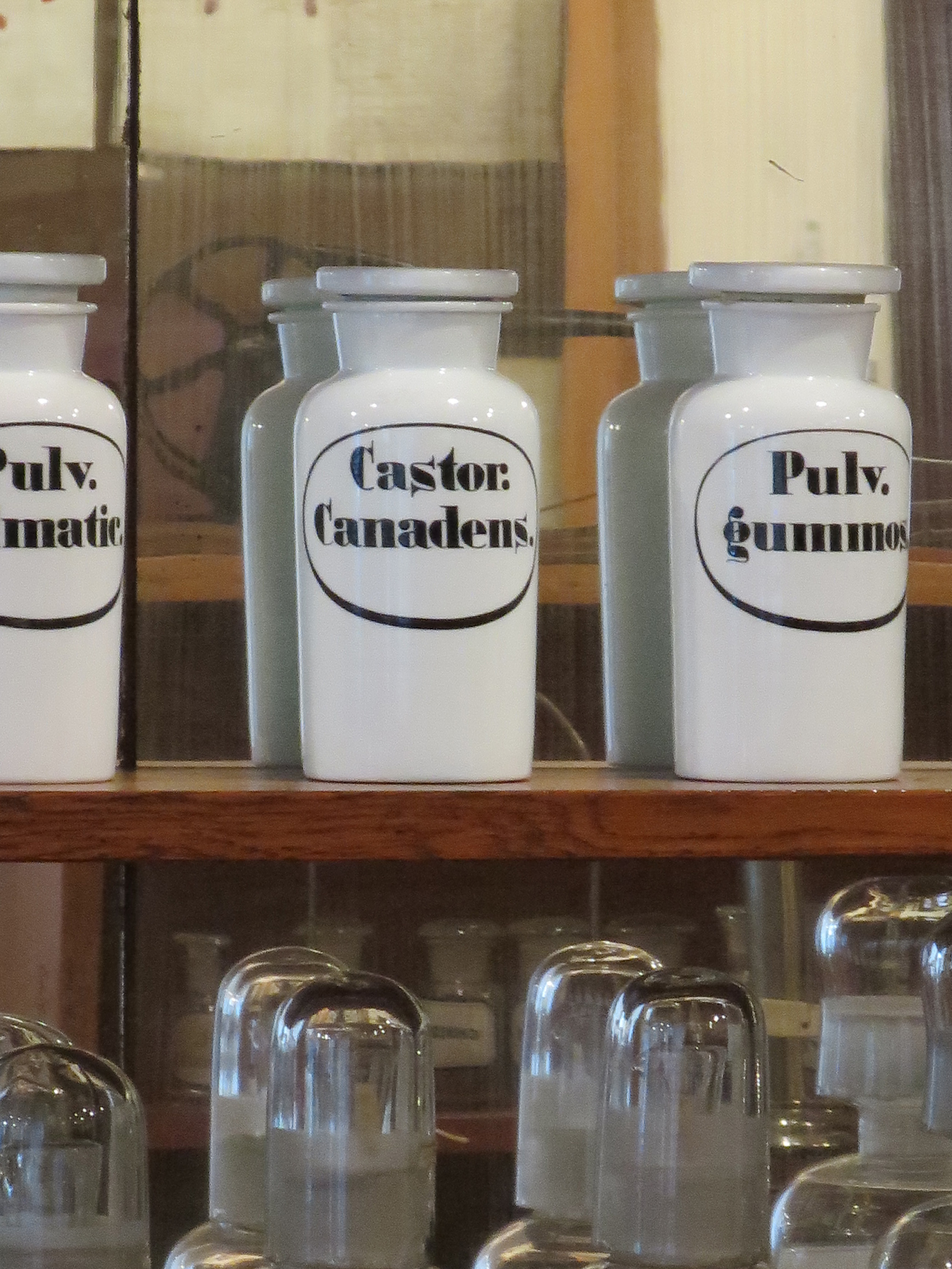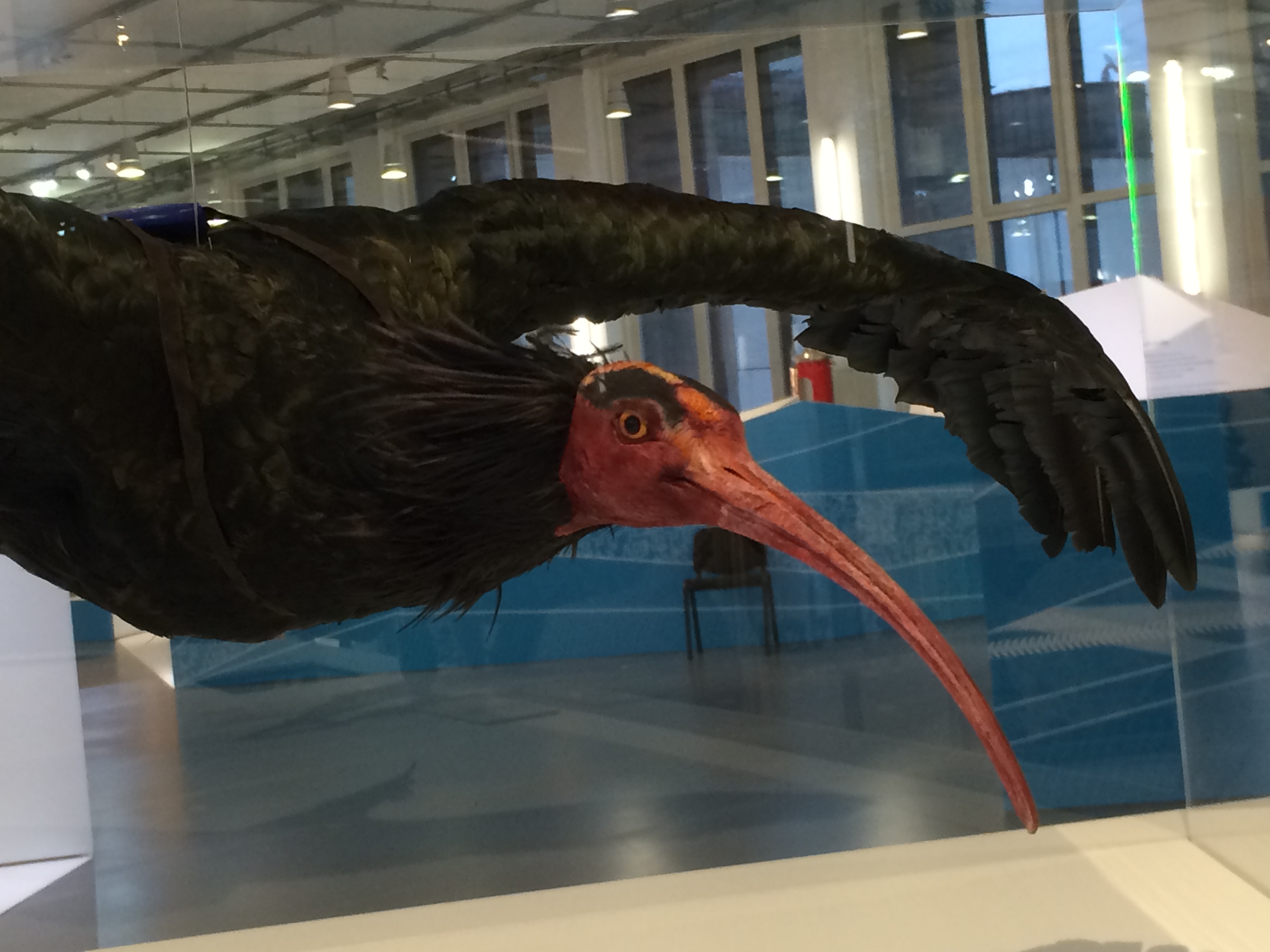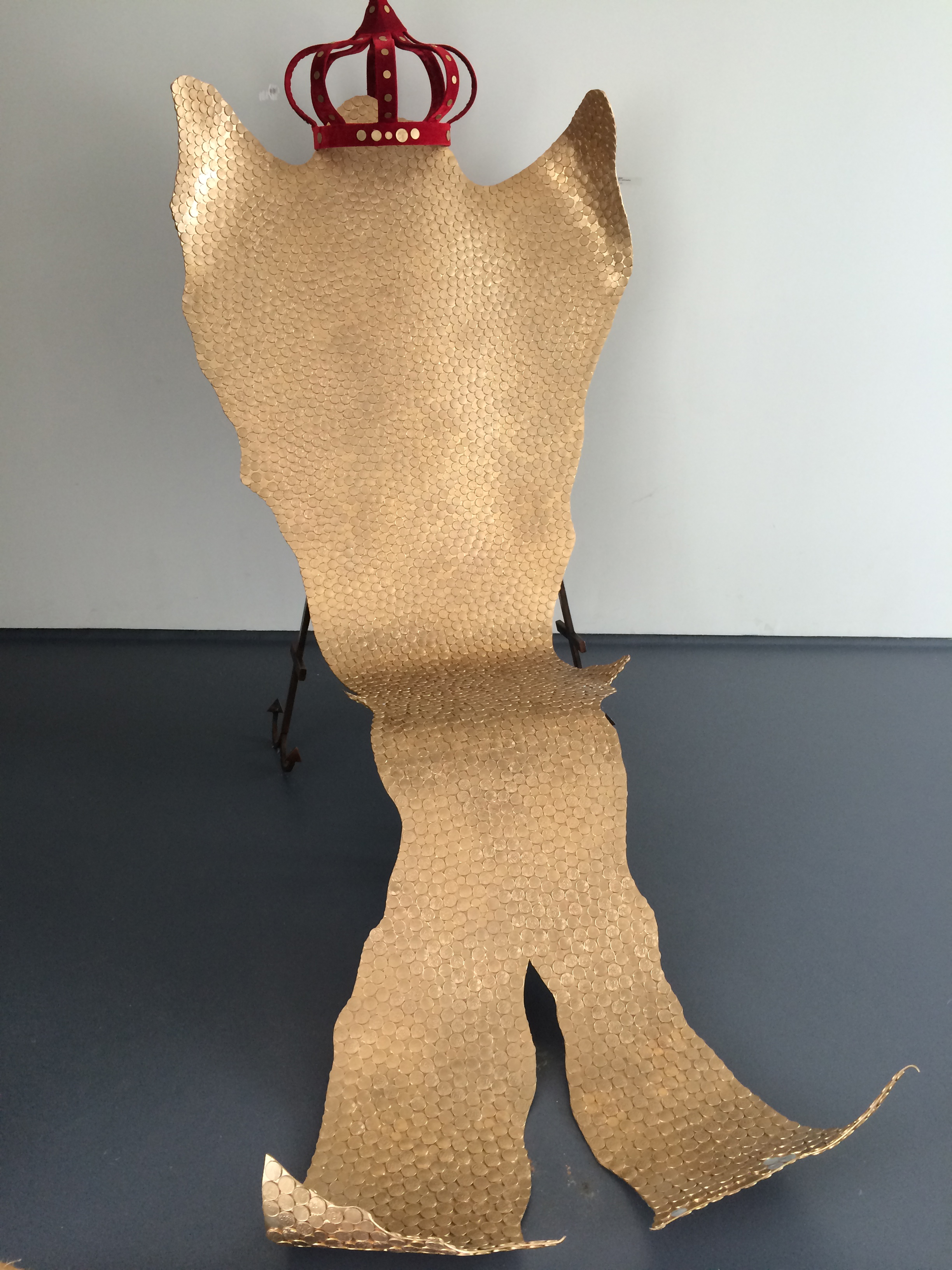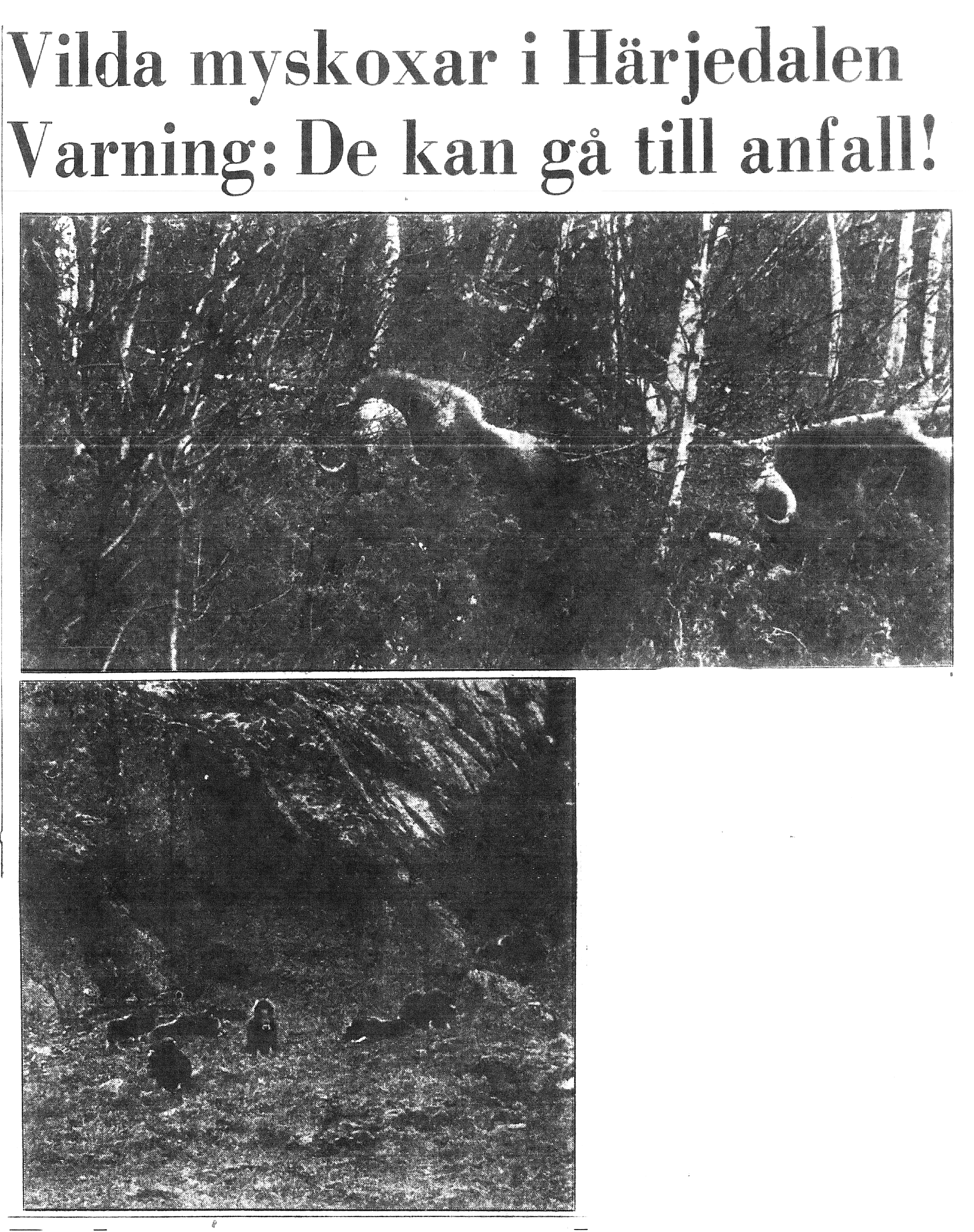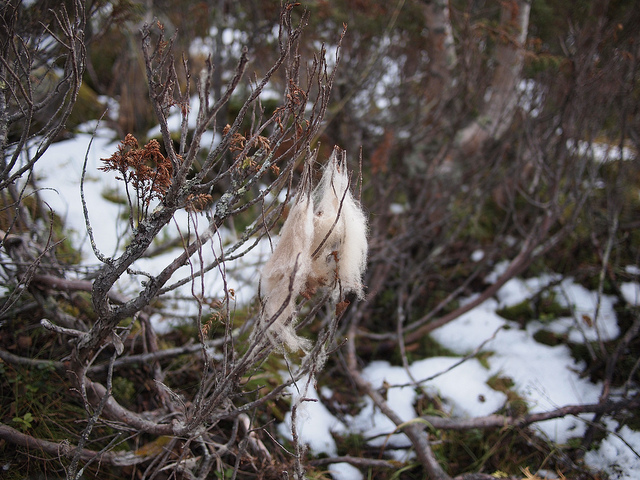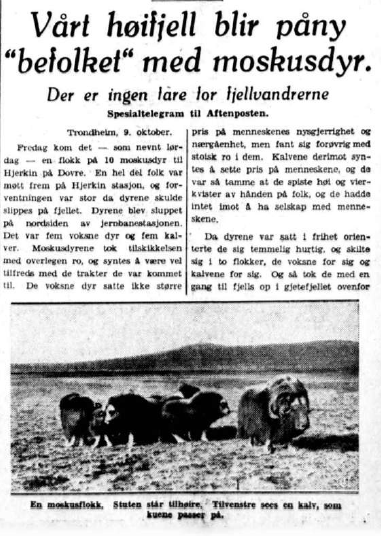-
Internal colonisation of Norway
Beavers had survived in a small pocket near Aamli, Norway, longer than any other place in northern Europe. Even though Aamli had this remnant, the rest of the country had lost all of its beaver populations, just like Sweden, Finland, and the Baltic countries. Norwegians, just like the Swedes, would start reintroducing the animals to their lost ranges in the 1920s. Although the beaver population was naturally expanding in the southern counties, reintroduction projects allowed quick starts for northern communities where beavers would not have reached for many decades. Beaver reintroductions to the north would continue through at least the 1960s. In 1925, three years after beavers had been released in Jämtland, Sweden, six beavers were released…
-
Muskoxen making a mark
If you ask people to name iconic polar animals, a few would probably appear on the list with the polar bear most assuredly on top. In 1967, the Norwegian Post Office issued official postmark for three Svalbard locations, Longyearbyen, Ny Ålesund, and Isfjord radio, which each featured an animal from Svalbard: reindeer, seal, and polar bear, respectively. These were obvious choices. In 1973, the Post Office decided to add to the original set with special postmark for Bjørnøya and Sveagruva. Bjørnøya featured a thick-billed murre (a bird in the auk family called polarlomvi in Norwegian), the first bird in the series. Sveagruva got a muskox! I discovered this as I spent most of…
-
Short-term thinking
The Norwegian newspaper Aftenposten ran a feature article a couple of weeks ago about alien species with the dramatic, quantitative headline: “2320 nye arter har kommit til Norge — halvparten er uønsket” (2320 new species have come to Norway — half are unwanted). Because the huge image at the top featured a muskox, it caught my eye. The article doesn’t really say much new. It covers the definition of “fremmed art” (alien species), which is defined according to the Norwegian Natural Biodiversity Law (Naturmangfoldloven NOU 2004: 28) as “en organisme som ikke hører til noen art eller bestand som forekommer naturlig på stedet” (an organism which does not belong to a…
-
Muskox reintroduction and Cold War politics
Rare animals, especially ones deemed worthy of environmental conservation, can take on political significance. I’ve previously discussed the complicated politics of claims on East Greenland and its intersection with muskox reintroduction in Norway in the 1920s and 30s. I’ve also written about the US-China exchange of muskoxen for pandas in the 1970s. It turns out that muskox reintroduction also factored into US-Russian politics in the 1970s. Norway was not the only place interested in reintroducing muskox. Muskoxen had been extinct in the western half of Canada and in Alaska since sometime in the 1800s (ethnographic evidence from the early 20th century indicated familiarity with muskoxen among Inuit peoples but only among…
-
To be or not to be a lemming
Engineering nature has been a long-term preoccupation of humans. In my research, this is most obvious in the case of muskoxen, which were imported to the Arctic archipelago of Svalbard in 1929 primarily as a future meat source (although politics certainly factored in). As in many 19th century acclimatisation projects that had gone before in North America and Australia, establishing muskox on Svalbard was believed to be the way to make the barren landscape productive. Many people adopted positive outlooks toward nature-improvement schemes, like proverbial lemmings following each other off a cliff (which, by the way, lemmings don’t actually do). Adolf Hoel, the founder of the Norwegian Polar Institute, and other…
-
This week in muskox
On twitter Jon Mooallem (check out his book Wild Ones) announced that he has discontinued his This Week in Wild Animals column. This prompted my husband to suggest I could do a “this week in beavers” or “this week in muskox”, but he added that he was sure I wouldn’t have enough material for such a thing. “Ha! You haven’t seen how many newspaper articles I have on my computer,” was my retort. Although I will not be doing a regular thing of it, I decided to look through my historical articles for what indeed had happened in the first week of January in the many years covered by my muskox files. To…
-
2014 in review
My previous post marked the 150th post of this blog and the year is coming to a close, so I thought it would be a great time to review what I wrote about in 2014. Although this blog is based on my research about beaver and muskox reintroduction in Norway and Sweden, I range far and wide in applying my research insights. Ongoing news about the beavers in the British Isles was worth comment several times, including coverage of the beavers discovered in Devon and their potential cull because of fears of disease. For some, the beavers are a lost species who is wanted back in Britain. For others, including the media, it’s…
-
A search for beginnings
People like to think about the beginnings of things. Understanding the beginning gives a sense of sureness, of identity, because you can know where the things after that came from. After all, the celebration of Christmas, which is all around us at the moment, is all about telling the beginning of a story. You certainly see the tendency in environmental history to search for roots, beginnings, and origins with titles like “The Historical Roots of Our Ecological Crisis” (White 1974) and Gifford Pinchot and the Making of Modern Environmentalism (Miller 2001), and Before Earth Day: The Origins of American Environmental Law, 1945-1970 (Brooks 2009), to name a few. But searching for the beginning can be…
-
Welcome to the Anthropocene
On Wednesday, I had a tour of the new exhibit Willkommen im Anthropozän (Welcome to the Anthropocene) at the Deutsches Museum in Munich, Germany. While the validity of the Anthropocene as a geologic time frame has been been debated, few would debate that human impact on the planet is wide and deep. Humans, unlike most other animal species, have the ability to radically transform the environment through technological artefacts (a subject which you can read more about in my recent article “Not by human hands”). Acknowledging the role of technology in the reshaping of Earth, it was fitting that the first large Anthropocene exhibit be hosted in a museum of science and…
-
Fundraising
As we enter the Christmas gift-giving season, we are becoming bombarded with requests for money. Advertisements soliciting donations to a plethora of charities from WWF to the Children’s Cancer Fund fill the newspaper pages and the mailboxes. Trying to raise funds for a worthwhile cause is, of course, nothing new. I mentioned before the fundraising undertaken for the Swedish beaver reintroduction projects, which was mainly based on individual private donations, often of very small amounts. Looking through documents about the muskox transfer to Svalbard, I discovered that another strategy was taken by Adolf Hoel and Norges Svalbard- og ishavsundersøkelser (later renamed the Norwegian Polar Institute) to raise funds for their muskox project: corporate…

